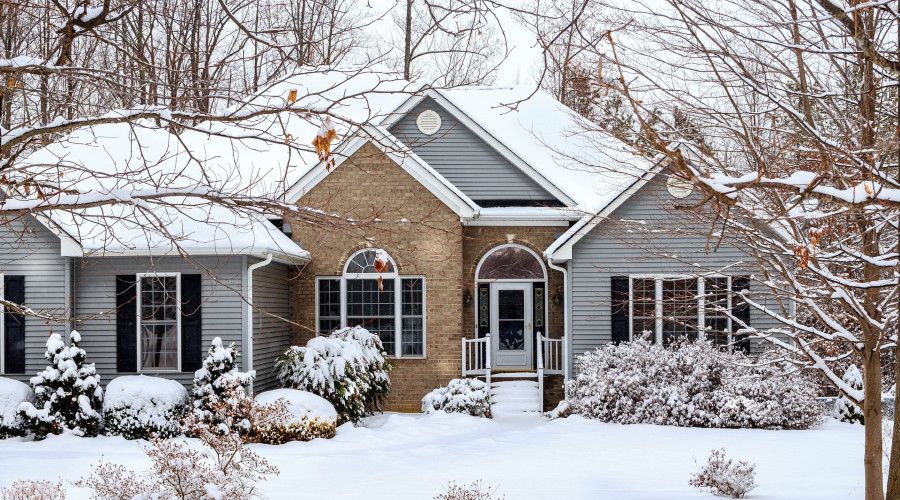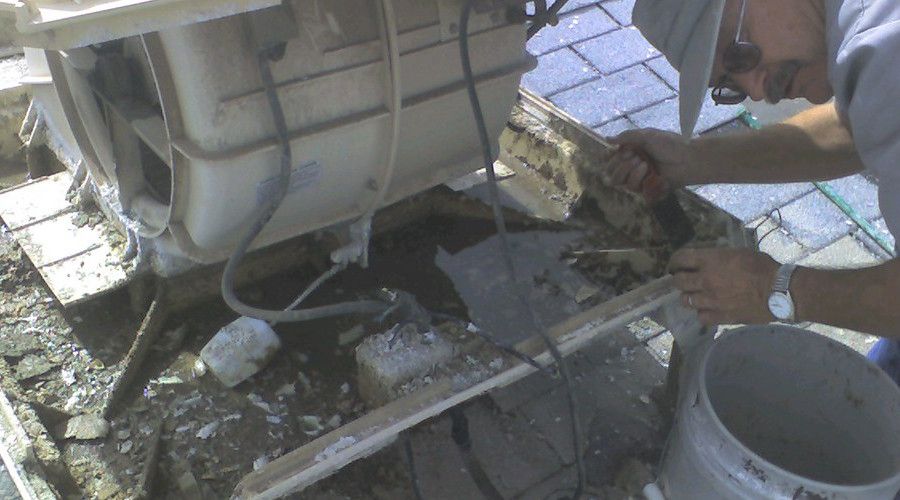Swamp coolers, or evaporative coolers, are a great alternative to keep your house cool during a hot summer. They aren't as powerful as air conditioning units, but they're still effective and more energy-efficient while being simple to use. If you aren't sure which one is best for you, read our article where we explain the differences between these two. However, if you've decided to buy a swamp cooler, but are still wondering which one you should get, take a look at our list of the best evaporative swamp coolers for hot summer days and nights.
During the colder times, swamp coolers have to be properly taken care of. When the off-season comes, you need to winterize them and it's sometimes a bit challenging, especially if you've never done it before. If you don't know how to safely tuck your swamp cooler away for the season, here are some tips and a step-by-step process on how to do it. Read this article and you'll know exactly how to prepare your swamp cooler for those cold months.
Does a Swamp Cooler Need to Be Winterized
Whether you live in a cold or a hot climate, you have to winterize your swamp cooler. This is very important because water expands as it cools, and it causes corrosion and rust. Untreated swamp coolers will also become moldy and possibly cause broken pipes or leaks due to disuse during cooler months.
Winterizing is also crucial for any swamp cooler still under warranty. Not doing so can negate the warranty coverage.
How to Winterize Your Swamp Cooler
Image credits: Christopher cornelius via Flickr
Thankfully, winterizing your evaporative cooler doesn’t require a lot of skill, energy, or time.
Gather Your Tools
Before you get started, I highly recommend gathering your tools in one place and making sure everything’s in order. You will need tools such as:
- Bucket(s)
- Sponges
- Rags or shop vac for soaking up spillage
- Adjustable wrench or pliers
- Replacement evaporative pads
- Cardboard or insulation board
- Evaporative cooler cover (as needed)
- Waterproof sealer (optional)
Disconnect Electric and Water for the Season
First, turn off the power, and disconnect the plug from the outlet and the water line from the cooler.
Drain the Water
Your evaporative cooler should have reasonably easy access to the drains, typically on the bottom of the cooler. Many people use a shop vac to drain out the cooler. This type of draining can often cause leaks. To drain correctly, remove one or two of the cabinet sides on the cooler housing. Drain out the standing water, then use the sponge or rags to dry out the pan.
Clean the Cooler
Next, use a non-toxic cleaner or soapy water and sponge to clean out the pan of the cooler. Make sure to rinse thoroughly and let stand to dry completely before taking the next steps. Put a fan in the room that will blow directly on the pan to speed up the process.
Apply Waterproof Sealer (Optional)
Now apply a waterproof metal sealer. Coat the bottom of the pan with the sealer to prevent rusting. Be sure to follow the instructions on the container of sealer closely to avoid any issues. Remember to check for leaks.
Change the Evaporative Pads
Once the pan is dry and sealed, change the evaporative pads. If you don't have time, do this before de-winterizing when you’re ready to start using the cooler again next season.
The method for changing these out varies depending on the cooler. That's why check the packaging for details on how it has to be done with your model.
Install a Winter Cover (Optional)
Winter covers protect your unit from elements during the colder months. Before buying one, check if the cover matches your cooler measurements. It has to fit as airtight as possible to work correctly.
Slip the cover over the cooler, and tie it into place along the bottom and sides of the unit. The vent panels will prevent moisture build-up.
Block the Vent
If you don’t take this step, you’ll have heat loss all winter and allow cold air to get inside. Cover the vent with properly shaped cardboard or with an insulation board.
When to Winterize
Image credits: fietzfotos via Pixabay
The precise timing required for winterizing varies based on climate and temperatures. The most critical point to keep in mind is doing so before the first freeze hits. Otherwise, you’ll potentially wind up with some broken pipes and possible damage to your evaporation cooler.
For those in warmer climates, consider closing up shop on these coolers when nights start dropping below 50° and days are in the lower 70s.
How to Keep a Swamp Cooler from Rusting
Image Credits: Photo by Terence Starkey on Unsplash
There are a few actions you can take to prevent your swamp cooler from rusting. The first is to buy a model with rusting resistance. If you already have a cooler, there are few other options.
Use a Waterproof Sealer
A waterproof sealer is a good solution. Remember to apply it when the pan is completely dry and clean.
Install a Sacrificial Zinc Anode
Similar to the concept of the anodizing rod installed inside home water heaters, a stick of zinc inside your swamp cooler sacrifices itself to the sake of the interior of your cooler. The metallic element surrenders the electrons, leaching them out into the steel and other metal parts, protecting them from rusting.
If you opt to include one of these, you’ll need to replace the rod often. Specifically, check them every season to make sure the one installed is still in good condition.
Maintain Your Cooler
Maintaining and winterizing your cooler properly will help to prevent rust. Clean the device regularly, apply sealants, check valves, and dry everything before storing it for the off-season.
Winterization Isn’t Hard
The instructions above can help you with getting your swamp cooler ready for the winter. Just remember to get everything dry before packing it, and make sure that the cover is tight, so the rain and snow won't get in there.




